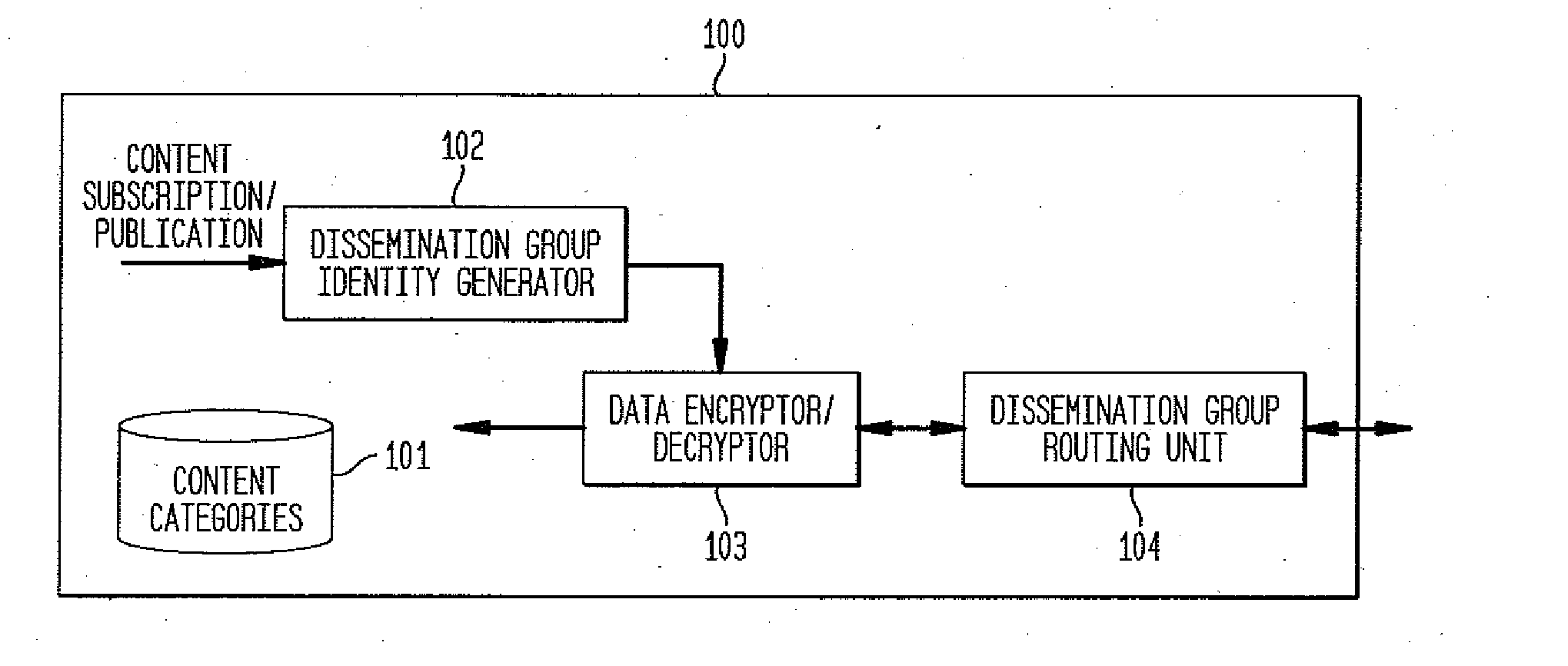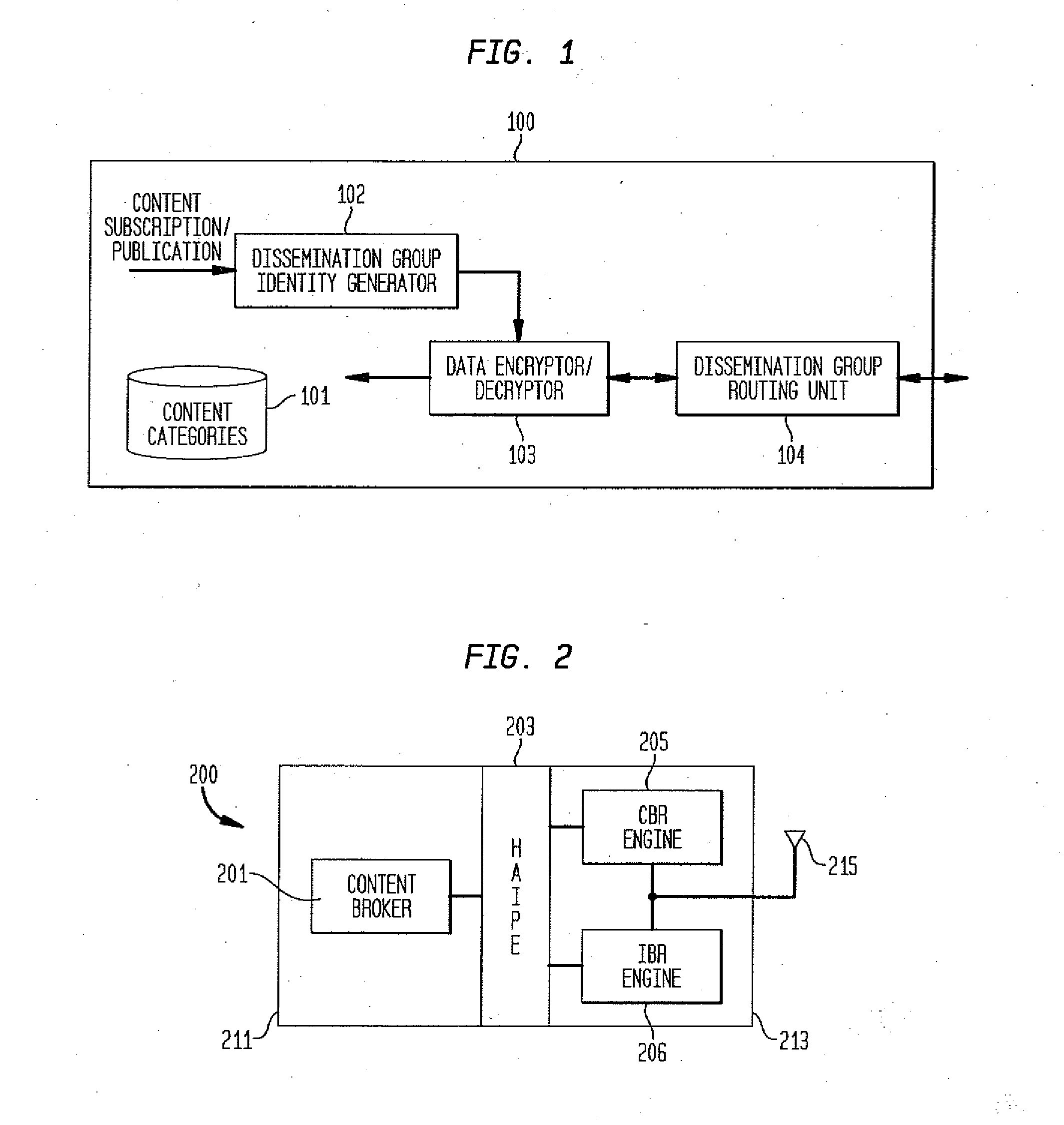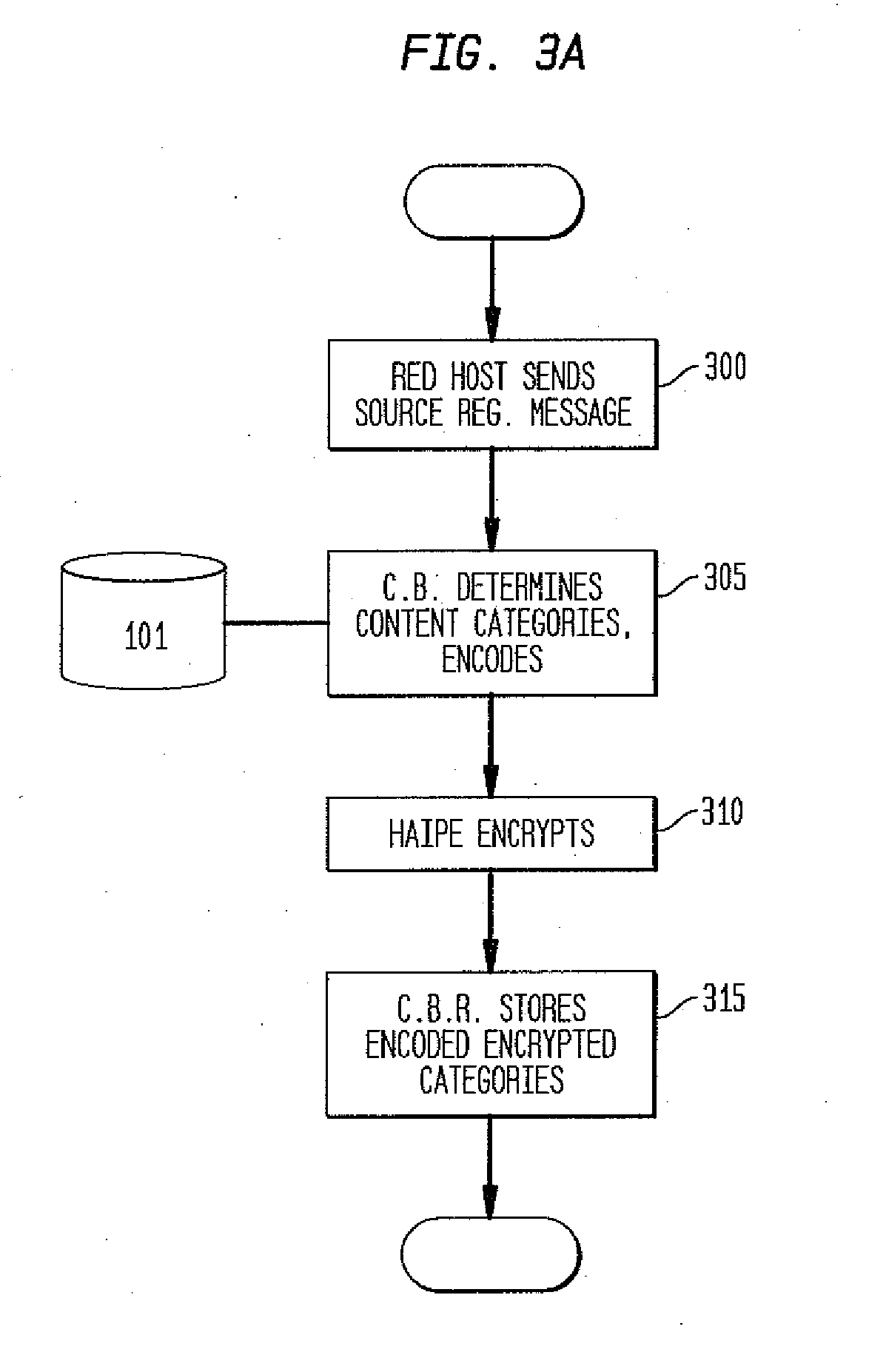Secure content based routing in mobile ad hoc networks
a content routing and mobile ad hoc technology, applied in the field of mobile ad hoc networks, can solve the problems of inability to address the subscription of receivers, many security measures that affect the content dissemination, and the efficient utilization of limited radio resources, so as to facilitate the route aggregation and stable content grouping
- Summary
- Abstract
- Description
- Claims
- Application Information
AI Technical Summary
Benefits of technology
Problems solved by technology
Method used
Image
Examples
Embodiment Construction
[0026]The present invention provides a secure content based routing approach for information dissemination in tactical networks. The method brings the characteristics of packet contents to the IP packet header, so that these efficient utilization techniques can be applied at as close to the IP layer as possible without revealing the actual contents to the intermediaries. According to the present invention, subscription is expressed in terms of information items. This is more general and flexible than dissemination based on multicast addresses, and avoids the problem of pre-deployment multicast address planning for dynamic engagement situations in battle fields. To be bandwidth efficient, the present invention establishes routing paths taking into account overlapping information needs of different nodes. Secure dissemination is ensured by separating the concerns of key management for trusted communication (entitlement grouping) from that of disseminating only specific information ite...
PUM
 Login to View More
Login to View More Abstract
Description
Claims
Application Information
 Login to View More
Login to View More - R&D
- Intellectual Property
- Life Sciences
- Materials
- Tech Scout
- Unparalleled Data Quality
- Higher Quality Content
- 60% Fewer Hallucinations
Browse by: Latest US Patents, China's latest patents, Technical Efficacy Thesaurus, Application Domain, Technology Topic, Popular Technical Reports.
© 2025 PatSnap. All rights reserved.Legal|Privacy policy|Modern Slavery Act Transparency Statement|Sitemap|About US| Contact US: help@patsnap.com



